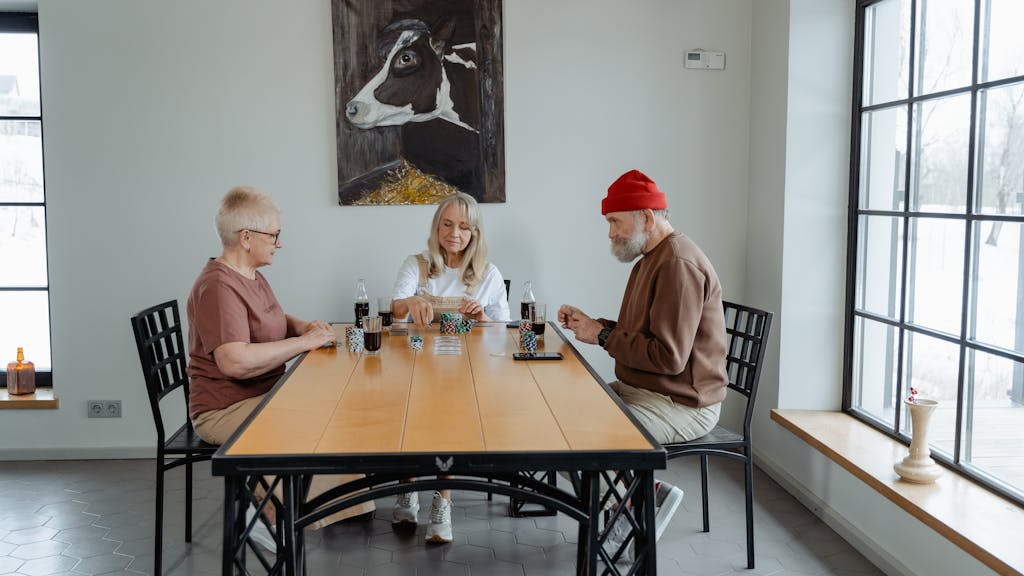As we age, our needs and priorities within our living spaces change. Designing a senior-friendly home means creating an environment that enhances comfort, promotes safety, and encourages independence without sacrificing style. It’s important to strike the right balance between practical modifications and maintaining an aesthetically pleasing atmosphere. Here are key considerations and tips for designing a home that’s both functional and beautiful for seniors.
Prioritize Accessibility with a Smart Layout
A key element in designing a senior-friendly home is creating a layout that maximizes accessibility. The goal is to reduce physical strain and ensure that all areas are easy to navigate. Start by eliminating or minimizing obstacles, such as bulky furniture or narrow pathways. Ensure that hallways, doorways, and rooms are wide enough to accommodate walkers, wheelchairs, or scooters if needed.
Consider an open-concept layout where living, dining, and kitchen areas flow into each other. This reduces the need for constant maneuvering between rooms and helps seniors feel more comfortable moving around. Additionally, avoid sharp corners on furniture and instead use rounded edges to prevent accidental bumps and falls.
Focus on Safety with Thoughtful Modifications
While style is important, safety should always come first. There are a number of modifications you can make to create a safer living environment without compromising on aesthetics.
Flooring:
Choose non-slip flooring materials, such as cork, rubber, or textured vinyl, especially in high-risk areas like the kitchen and bathroom. Avoid thick carpets that can be tripping hazards and opt for low-pile options that are easier to walk on.
Grab Bars and Handrails:
Installing discreet grab bars in bathrooms, near stairs, and along hallways can provide stability and prevent falls. Choose stylish options that blend seamlessly with the home’s décor. For example, sleek, modern grab bars that resemble towel racks can provide both function and style.
Lighting:
Good lighting is essential for safety and comfort. Install bright, well-placed lighting throughout the home, especially in stairways, hallways, and bathrooms. Consider motion-sensor lighting in areas where seniors might have difficulty finding light switches.
Create Comfortable, Adaptive Furniture
Furniture should be both comfortable and functional, offering support while also fitting into the overall design of the home. Look for pieces that provide extra cushioning and support, such as ergonomic chairs, recliners, and couches. Furniture with adjustable heights, like beds and chairs, can help seniors get in and out of seating positions with ease.
Consider adding chairs with armrests to assist with standing up, and beds that are at the right height to minimize the effort needed to get in and out. A good quality mattress is essential for restful sleep and can be a big factor in maintaining health and comfort.
Storage is also an important consideration. Built-in storage, such as cabinets with pull-out shelves, offers easy access to everyday items without the need to bend or reach.
Incorporate Technology for Convenience and Safety
Smart home technology can improve the functionality of a senior-friendly home while maintaining style and convenience. Integrating voice-activated assistants, such as Amazon Alexa or Google Assistant, allows seniors to control lights, play music, make phone calls, and set reminders without having to move.
Consider adding smart thermostats to maintain a comfortable temperature without the need to manually adjust the heat or air conditioning. Smart security systems can provide peace of mind, with features like video doorbells and motion sensors that alert the homeowner to any unusual activity.
Additionally, installing emergency alert systems or wearable health devices can help seniors get assistance quickly if needed. These devices can detect falls, monitor heart rate, or alert family members or emergency services if necessary.
Design for Comfort with Soft Touches
While functionality and safety are key, comfort and aesthetics matter just as much in creating a senior-friendly home. Soft textiles, such as plush cushions, cozy throws, and comfortable bedding, add warmth and make the space feel inviting.
Choose color palettes that promote relaxation—soft neutrals, warm tones, and calming blues can make a room feel peaceful. Consider adding personal touches, like family photos, artwork, or heirlooms, to create a sense of familiarity and comfort.
Furniture upholstery should be made from durable, easy-to-clean fabrics that can stand up to wear and tear while still offering a luxurious feel. Fabrics like leather, microfiber, or high-performance materials are stylish and practical for senior living.
Maximize Outdoor Space for Fresh Air and Relaxation
Outdoor spaces can be an extension of a senior-friendly home. A well-designed outdoor area can provide a safe, relaxing environment for fresh air, gardening, and relaxation.
If you have a patio, porch, or garden, make sure the outdoor area is accessible. Choose sturdy furniture with good support and low heights for easy sitting and standing. Add plants or flowers for a touch of nature and visual interest.
Create pathways that are smooth and well-maintained, with minimal risk of tripping. If there are stairs, consider installing ramps to make outdoor spaces more accessible for people with mobility issues.
Conclusion
Designing a comfortable and stylish senior-friendly home is all about creating a space that supports independence, safety, and well-being while reflecting your personal style. By focusing on accessibility, safety, comfort, and thoughtful design, you can create a home that enables seniors to live with ease, dignity, and comfort. With the right balance of practicality and aesthetic appeal, a senior-friendly home can be a beautiful, functional sanctuary that enhances quality of life for years to come.




